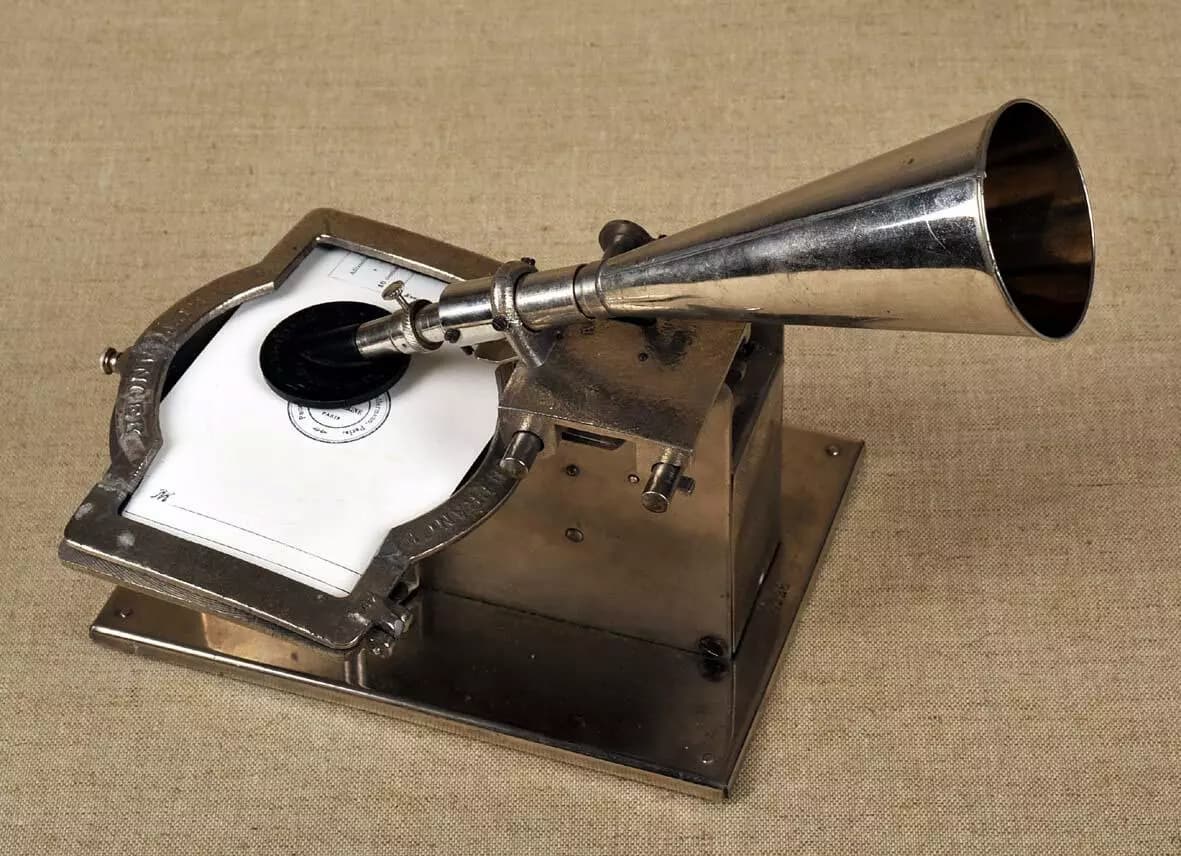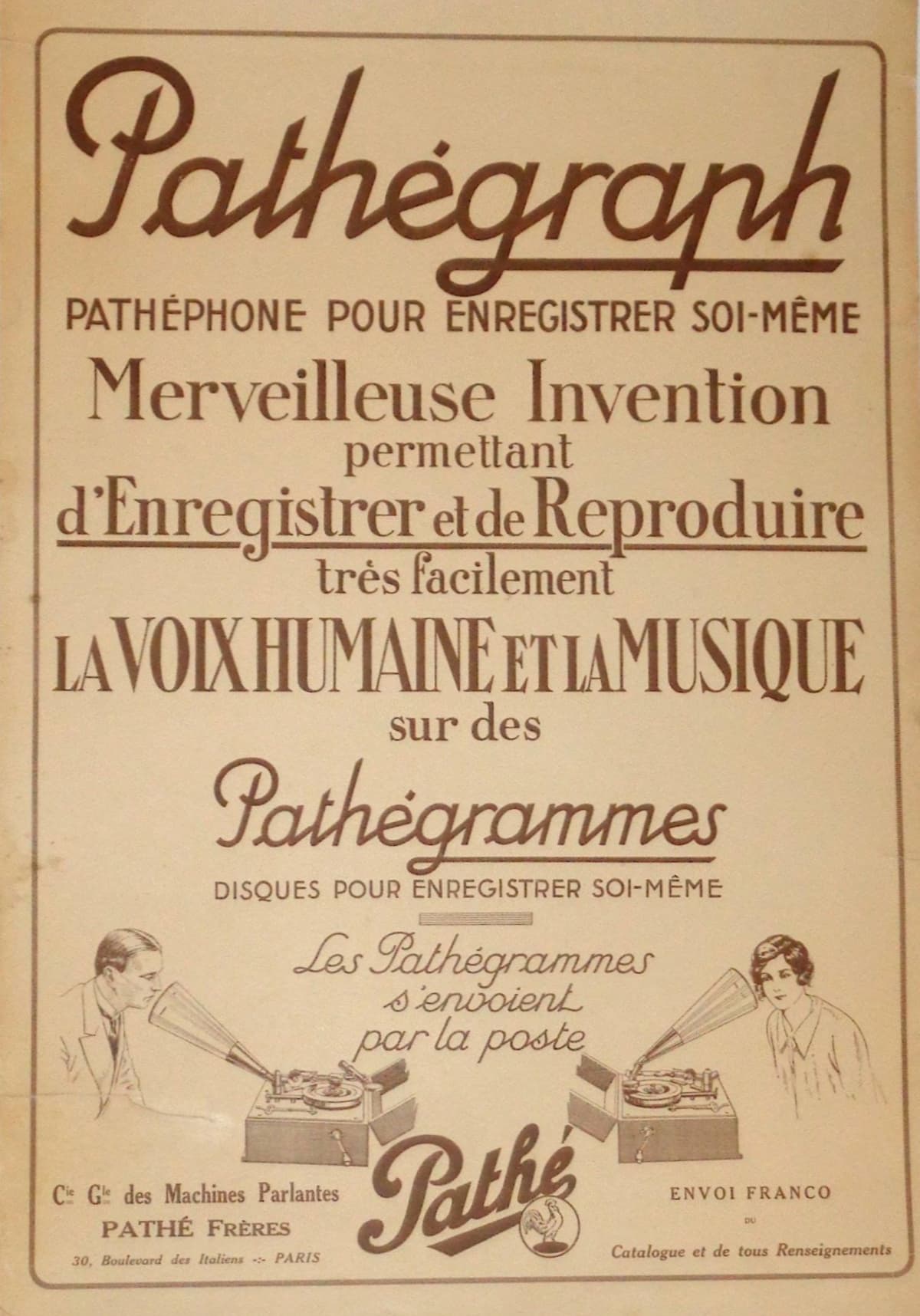More poking around the Gallica site and we happened on a section that deals with sound that can be sent – but using the post instead of the internet.
One of the early inventions for communicating via sound was the Phonopostal, a little hand-held recording and playing gramophone.
Slide the card into the holder, speak into the horn and your voice (or other sound) gets recorded onto the card, which you then can mail to your friend who also had the Phonopostal. There were two horns: one for recording and one for playing. This was state of the art for 1905. The sound cards were covered in wax upon which the sound waves were recorded.

Phonopostal (Musée de la Post)
The recording was on one side of the card and the other side of the card could be addressed or might have an image. Needless to say, this, although innovative, didn’t catch on, not the least because your correspondent needed to have the same instrument to play the mere 60 words you could record. The cardboard material of the card was another problem, being too flimsy to last for very long.
Camille Saint-Saëns: Étienne Marcel, Act III: Ballet – I. Entrée des écoliers et des ribaudes (Residentie Orkest, The Hague; Jun Märkl, cond)
Argentina also experimented with the Fonopost, but you needed to go to a special recording van to make your 8-inch 78-rpm record to send through the mail. It lasted from 1939 through 1969 and was used in other countries: The Netherlands had a Fonopost recording unit as well. The recordings could be played on regular photographs.
Maurice Ravel: L’Éventail de Jeanne (Jean’s Fan) – Fanfare (Philharmonia Orchestra; Geoffrey Simon, cond.)
PathéPost was another mail-phonograph system in France. It was developed by the Pathé company, which in the early 20th century was a major producer of photograph records. Record on a disc, mail the disc, and your friend with the same machine could play it. This was an extension of the sound postcard begun by the Phonopostal. The PathéPost was also based on a cardboard blank, but used a heavier black wax and had two sizes of recording: 11 cm and 14 cm. This was patented in 1908 and seems to have lasted at least through WWI when Pathé upgraded it to the more compact PathéGraph. The PathéPost came in two suitcases – the lower one with the recording and playback device and the upper one with the spare records and envelopes.

PathéPost, 1908 (Gallica, ark:/12148/btv1b55013001g)

Advertisement for the Pathégraph (PHONO Museum Paris)
Now, of course, we can listen to the radio, stream music through our phones, use social media to connect with others, and the telephone to actually talk in real-time. Before those innovations, though, even over a century ago, everyone was experimenting with sending sound.
For more of the best in classical music, sign up for our E-Newsletter




